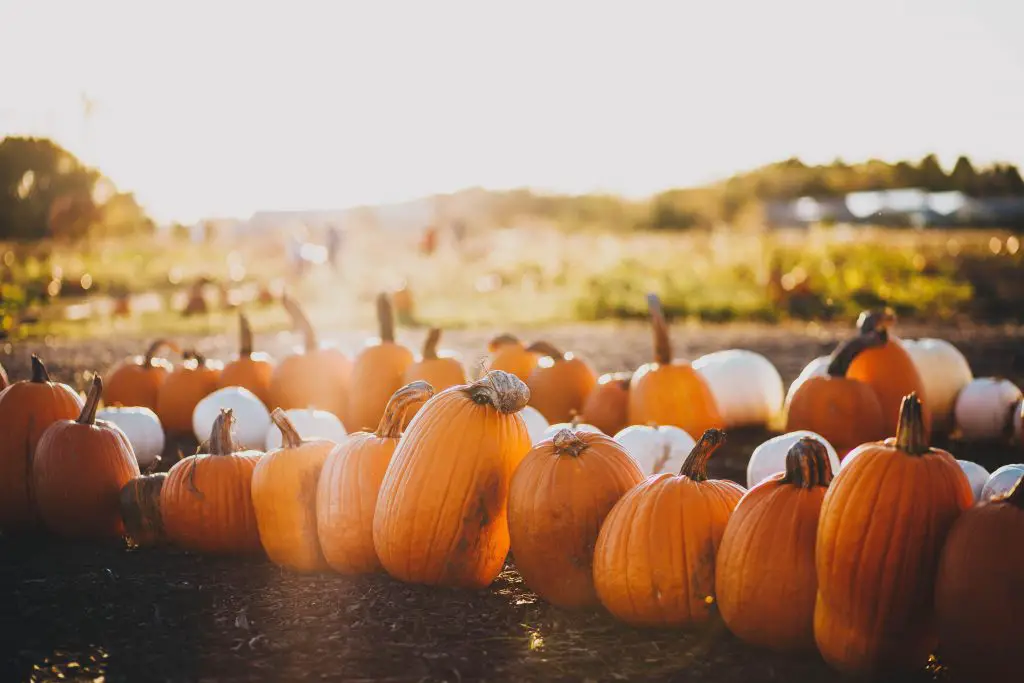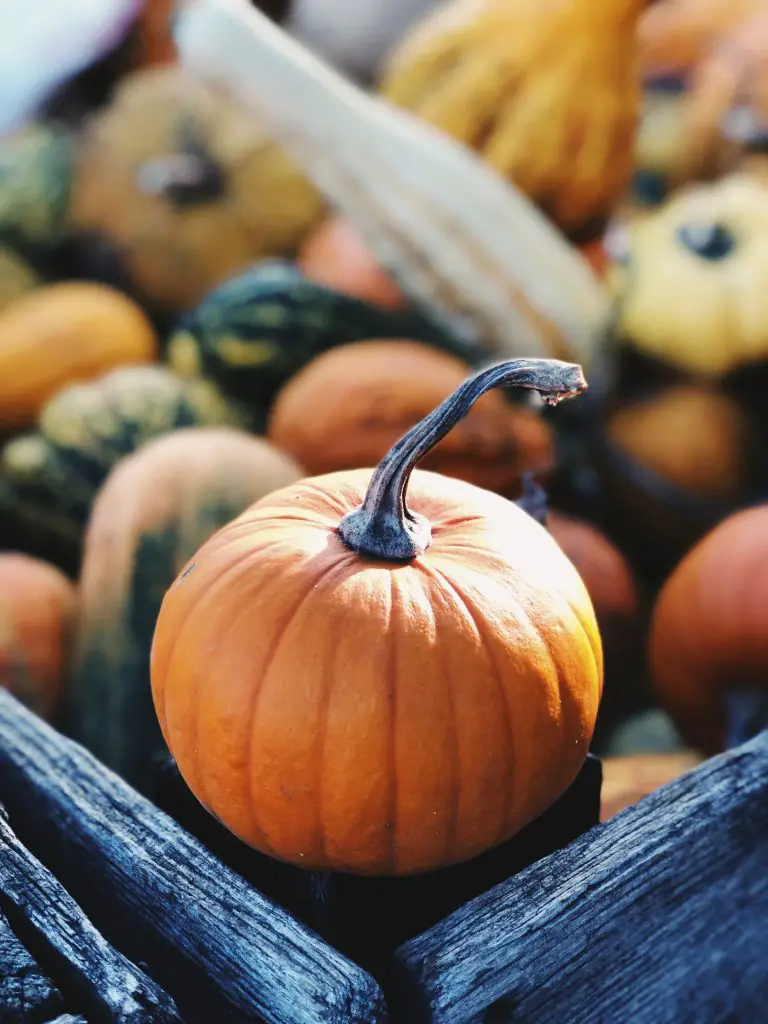Are Pumpkins Berries? Pumpkin vines are a plant that is commonly grown in many people’s yards at home to produce a product that is sometimes referred to as a vegetable, fruit, and a berry. So which one is it and why?
Pumpkins can be classified as both a fruit and a berry. The reason for this is that berries are a subclassification of fruit that is more general in nature than the calling it a berry. Therefore pumpkins fit the criteria for both berries and fruit. However, a pumpkin is clearly not classified as a vegetable, as this means that the edible part of the plant is a leaves, stem, or root of the plant.
A fruit is defined as a matured ovary that contains the reproductive structure of the plant which is generally the seed of the plant. The mature fruit element of the definition is required as if the seeds are not mature they will not allow the reproduction of the plant to occur. Additionally, mature fruit also serves to attract animals that can disperse the seeds such as birds, and bats.
Whereas berry is defined by britannica.com as a fruiting body that contains many seeds rather than a single seed. This means that many of the plants that are referred to as berries which include raspberries, blackberries, and strawberries are not actually berries.
The berries are further divided into two main types of berries called hesperidium and pepos. Hesperidium are berries that have segmented sections within the fruit body. A common example of this type of berry is a citrus fruit such as an orange or lemon. The second type of berry, Pepos, which does not contain segments within the fruiting body is the category that pumpkin falls into along with many other members of the cucurbit family, such as cantaloupes and watermelon.

About Pumpkins
Pumpkins are the common name for the species Curburbita Pepo, which is a type of winter squash. However, the term pumpkin is also used to describe some other species that have a similar appearance.
Pumpkins originated in North America in the southern parts of the USA and Mexico, and were domesticated around 7000BC. According to the oxford dictionary the word pumpkin was derived from the greek word pepon meaning “large melon”.
Pumpkins spread quickly through the different regions of the world with the discovery of the new world. It was first introduced in the 16th century to Tudor England before spreading throughout Europe. As a result of this wide adoption, numerous cultivars were developed and there are now close to 100 different varieties available.
The Pumpkin is a frost-tender annual plant that grows on a vigorous vine with tendrils that can be grown on the ground or trained onto a trellis. To successfully grow pumpkins relatively warm conditions are required. Pumpkins will typically produce fruit that is 6 to 8 lbs (3 to 4 kg) in weight on average.
However, there is a huge variation in size depending upon the particular variety with fruit weighing anywhere between 1lb and 500 lbs. However, it is most common to see a total yield per plant between 6 and 66 lbs (3 and 30 kg). To read more about the best varieties to grow click here.
The Pumpkin harvest generally will store well so it is quite possible for an average home gardener to produce enough pumpkins to last a full year. I personally produce around 200 lbs of pumpkins per year which usually last my house (a family of 5) for the entire year.

How To Grow Pumpkins
Pumpkins are an extremely easy vegetable to grow and will germinate readily if there is sufficient heat. Pumpkins require at least 59°F (15°C) to germinate.
Plants can be established by direct sowing into the soil in the garden however I recommend starting them in modular trays. The main reason for this is that sowing the seeds in trays provides an opportunity to control the climatic conditions. Additionally, it provides an opportunity to start the plants off earlier in the season, which is particularly important if you live in a region where the growing season is short.
Seeds can be planted approximately 4 to 6 weeks prior to the last frost indoors. To maintain the ideal growing conditions we suggest purchasing a heated propagation tray. The one we recommend is the iPower Heating Seed Starter Germination Kit, shown in the picture below largely because it has a vented humidity dome and is relatively inexpensive. Click on the link to see the current price on Amazon.

Once the seedlings reach a reasonable size they can be planted out into the garden once the risk of frost has passed. They should be spaced approximately 3 to 4 ft apart as the plants will need space to spread out. In terms of soil conditions, pumpkins are a hungry plant that requires plenty of nutrients as such it is recommended that additional compost or well-rotted manure be added before planting.
Once the seedling is planted it will initially need protection from slugs and snails. To provide this protection it is best to use snail pallets or a physical barrier such as a cloche. These protections are usually only necessary for the first few weeks until the plant is sufficiently large to survive the snails having the odd nibble.
As the Pumpkins begin to develop and spread along the ground they can be encouraged to climb trellis if space becomes an issue. During this period it is important to ensure that the plant remains moist by watering regularly. To maximize the garden output corn and climbing beans can be grown in the same space.
This technique comes from the native Americans and is referred to as the three sisters. The beans are a legume that provides additional nitrogen to the soil that helps the pumpkin and beans to grow, while the corn provide a structure for the beans to climb on. The pumpkin vine acts as a ground cover helping to retain moisture for all three plants and suppressing weed growth.
As the plant starts to grow small green fruit will begin to develop that with progressively become larger over time. At this stage, it is common for the plant to produce more fruit than the plant can support, as a result of this it is common to see some of the fruits dying off. In most cases, it is common to get between 1 and 5 fruit per plant.

Harvesting And Storing Pumpkins
The first sign you will observe that the fruit is almost ready to be harvested is when they begin to change color. This normally coincides with the dieback of the foliage. The second common indicator is a hollow sound when you tap on the side of the pumpkin.
At this stage, it is generally best to leave the fruit outside as long as possible to allow the fruit to fully ripen. However, if the weather is particularly cold and rainy it may be necessary to bring it inside.
When removing the pumpkin from the vine it is best to cut the stork around 2 inches (5cm) from the fruit. The reason for this is it will extend the life of the pumpkin significantly as the point where the vine meets the fruit as this is the first point where bacteria can get into the fruit.
To optimize the shelf life it is important to ensure that the fruit is store in a cool, dark and dry location. If the pumpkin is stored in that way it is possible to store pumpkins for up to 12 months.
Related Articles
Can I plant pumpkin seeds from a store brought pumpkin?
Why are my pumpkin leaves turning white?
How Much Space Do You Need Between Pumpkin Plants?
How Many Pumpkins Are Produced Per Plant? And How Big Are They?
Do Pumpkins Grow Back Every Year?
Can Pumpkin Be Grown In A Pot? (And Here Is How To Do It)
